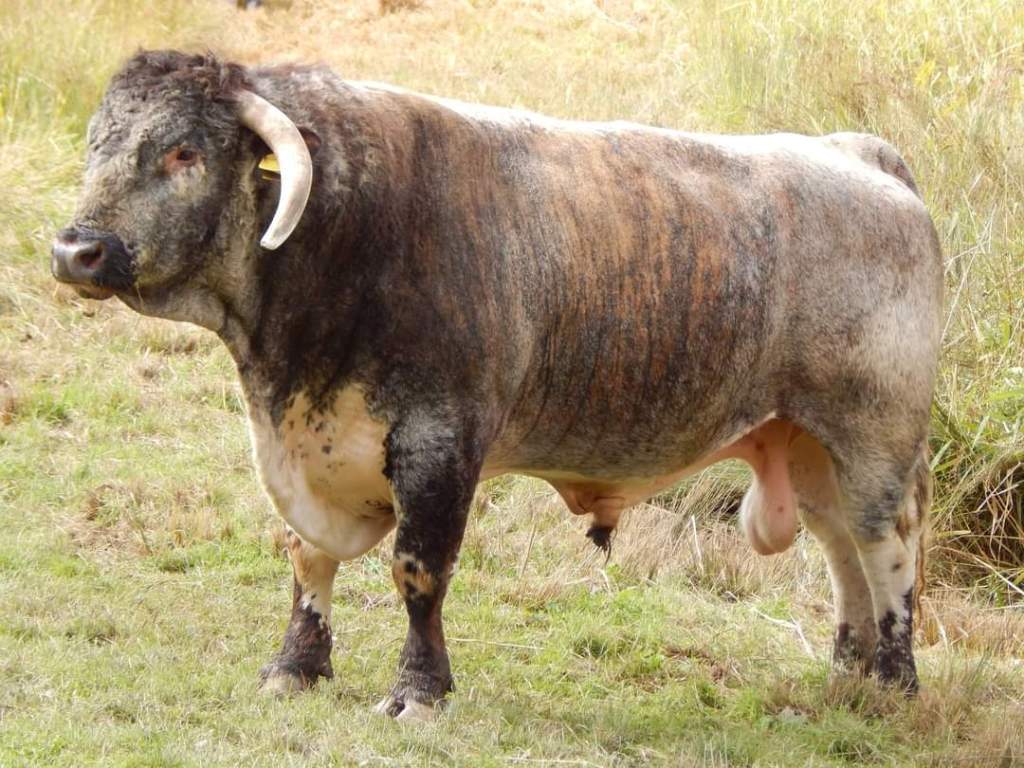
[054] Bos Taurus, Cattle
Introduction
The hardest thing to explain about the species [054] Bos taurus is what they are called. I will call them Domestic Cattle or just Cattle. They have been domesticated and farmed for thousands of years – for meat, milk, leather and other products.
Taxonomy
Kingdom – Animals
Phylum – Chordates
Class – Mammals
Order – Artiodactyla (Even-toed Ungulates)
Family – Bovidae
Genus – Bos
Scientific Name – Bos taurus
Subspecies – Bos taurus taurus
The Zebu, Bos taurus indicus, is a humped animal found in India and Africa, now generally considered to be a separate subspecies of Bos Taurus.
Both are descended from wild Aurochs, which are now extinct.
There are over a thousand recognized breeds worldwide. Most breeds still have horns.
Name
Cattle have been with us for so long that they are named through the process of farming. Generally speaking,
- A Bull is an adult male;
- A Cow is a female animal that has had at least one calf (sometimes two, depending on regional usage);
- A Heifer is a female that has not yet had a calf and is under three years old;
- Calves (singular: calf) are young of both sexes before being weaned;
- Weaners are young after weaning but under a year old;
- A Bullock is a castrated male (or in America a young bull);
- A Steer in America is a castrated male;
- An Ox (plural: oxen) is an animal kept for draft or for riding, usually a bullock or female animal;
- A Freemartin is a female twin of a bull, usually becoming an infertile intersex;
- A neat is an obsolete term for a horned ox.
- Cattle is a general word for the animals in general.
- Beef Cattle are cattle raised for human consumption.
- Dairy Cattle are bred specifically for milking.
- Bovine is a general adjective applying to cattle.
Those not involved in farming just use the words bull, cow and calf for the male, female and young, terms that apply to several other animals including whales, hippopotamuses, camels, elks and elephants (none of which will appear in this blog.)
The word ‘cattle’ coming originally from Latin ‘caput’ is cognate with ‘chattels’ and economic ‘capital,’ originally just meaning personal property, especially livestock, that was sold as part of the land. In the King James Bible, ‘cattle’ refers to any livestock as opposed to ‘deer’ meaning wildlife. We use the word now just for this species of animal.
There is no singular form of ‘cattle.’ Sometimes an unidentified animal seen at a distance may be called a cow, which is statistically quite likely to be accurate. More accurate terms are head of cattle, cattle beast or bovine.
‘Cow’ comes from Anglo-saxon roots and is cognate with the now obsolete plural form ‘kine.’
‘Bull’ also comes from ancient roots and ‘bullock’ is a diminutive.
Bos (for the animal in general) and taurus (for the male) are both Latin for this animal.
Description
Cattle are large even-toed (cloven-hoofed) ungulates. Like antelopes, pigs, deer, giraffe, camels, sheep and goats, they bear their weight on just two of their toes.
I won’t go into the complex nature of their stomachs and digestive systems, which are what makes them ungulates.
They come within the family Bovidae, which consists of sheep, goats, antelope and its closer relatives within Bos. (See below.) All male Bovidae and most females have horns but they have been bred out of most breeds of domestic cattle.
You can search the Internet if you want to know any more about cattle reproduction or farming or breeds but this blog is not intended to be a full encyclopaedia of information.
Here are a selection of breeds, mostly cows but starting with another bull and some calves.

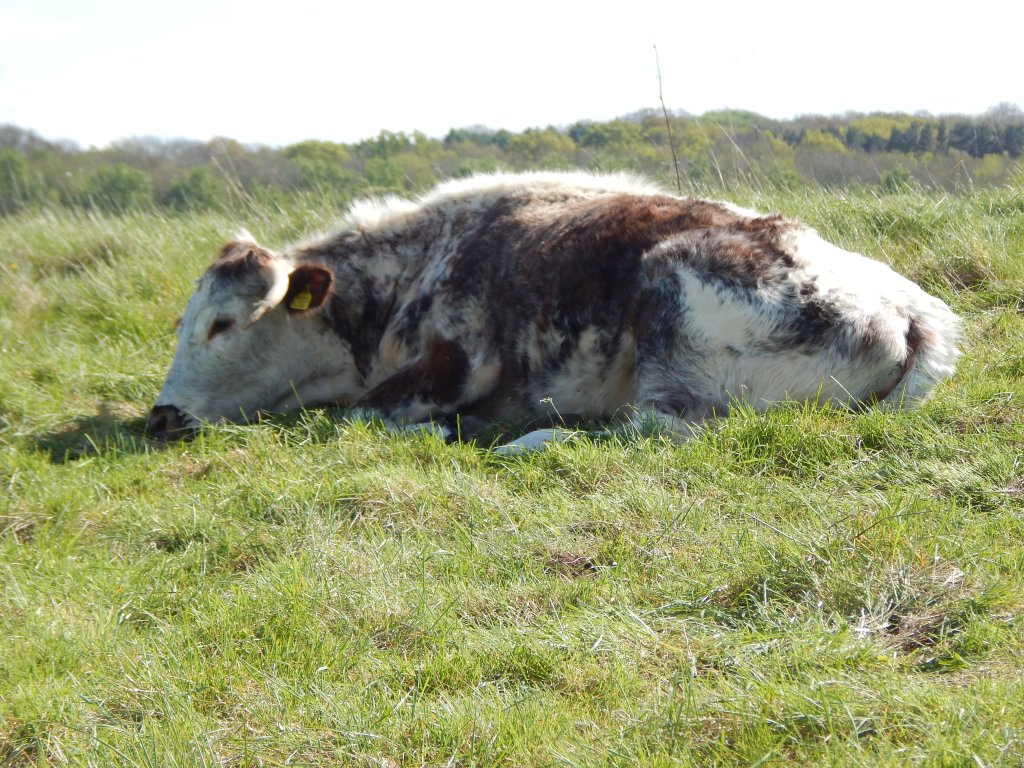

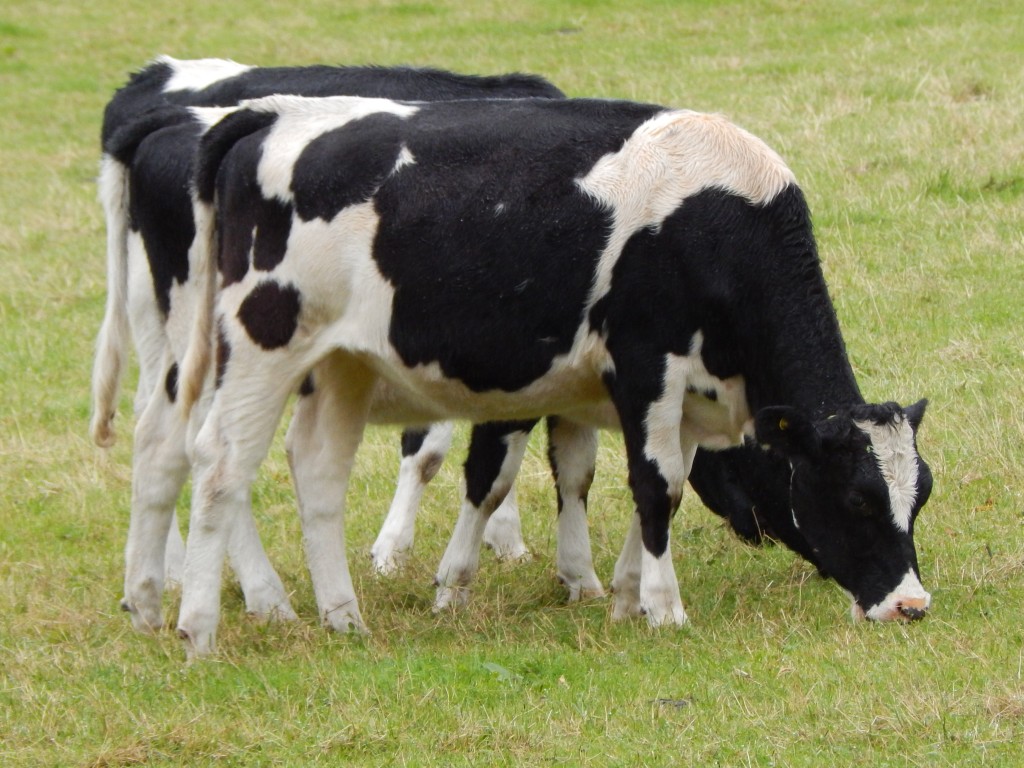
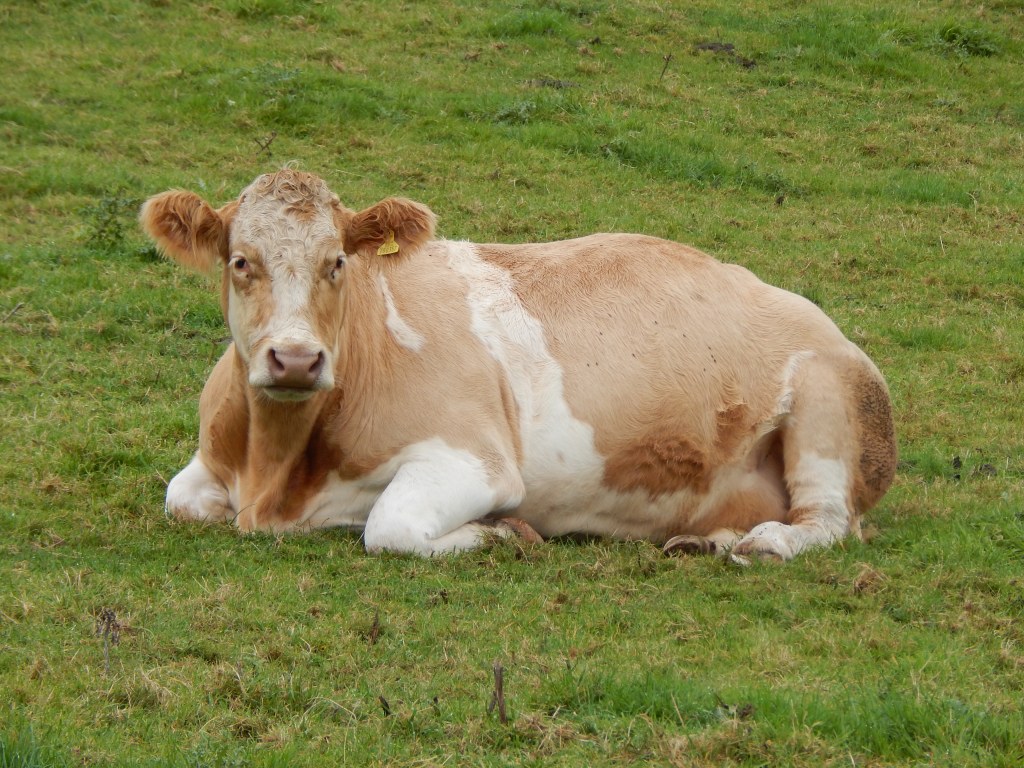

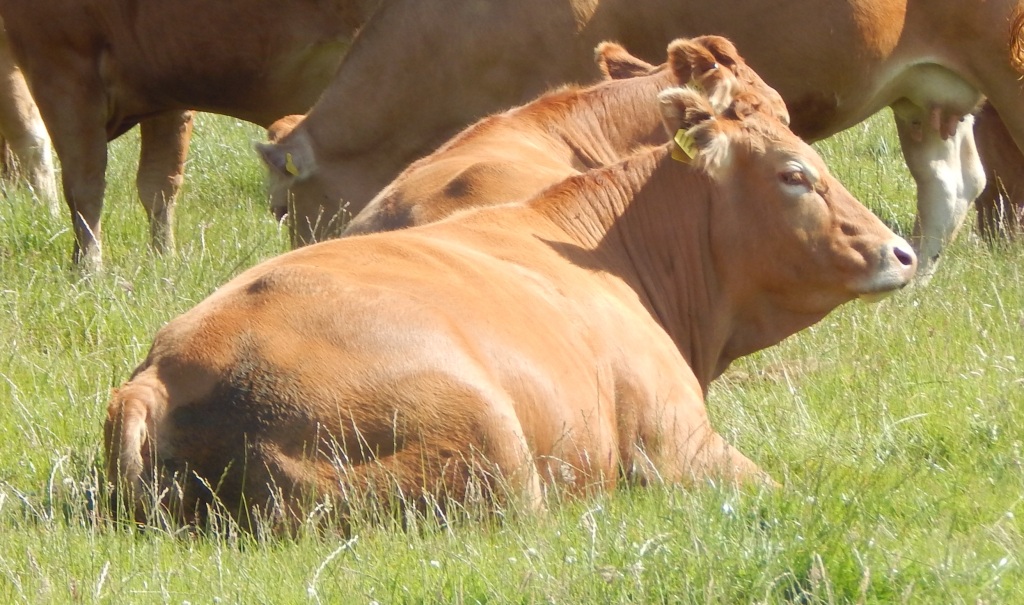
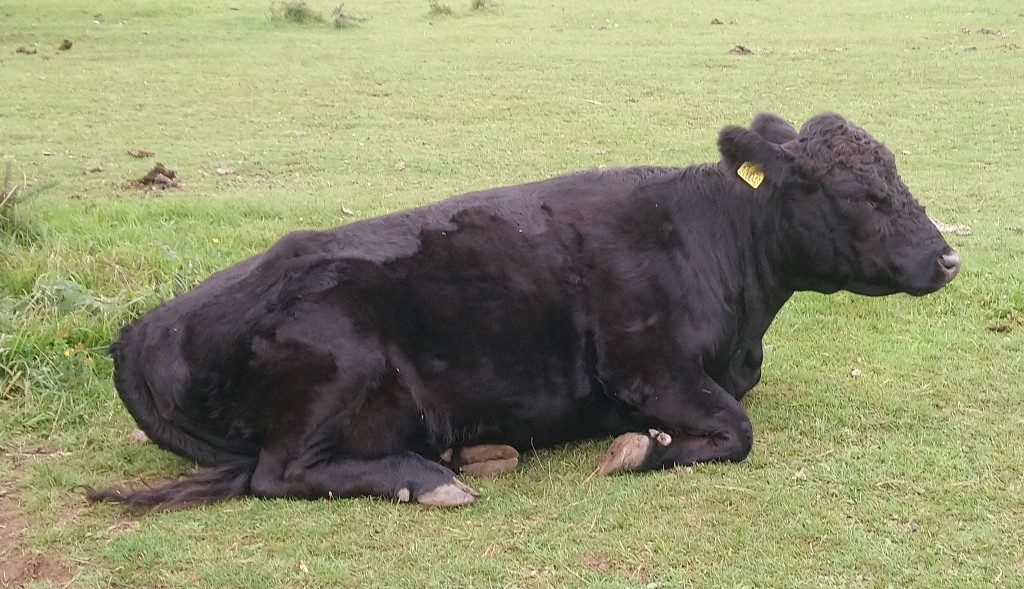
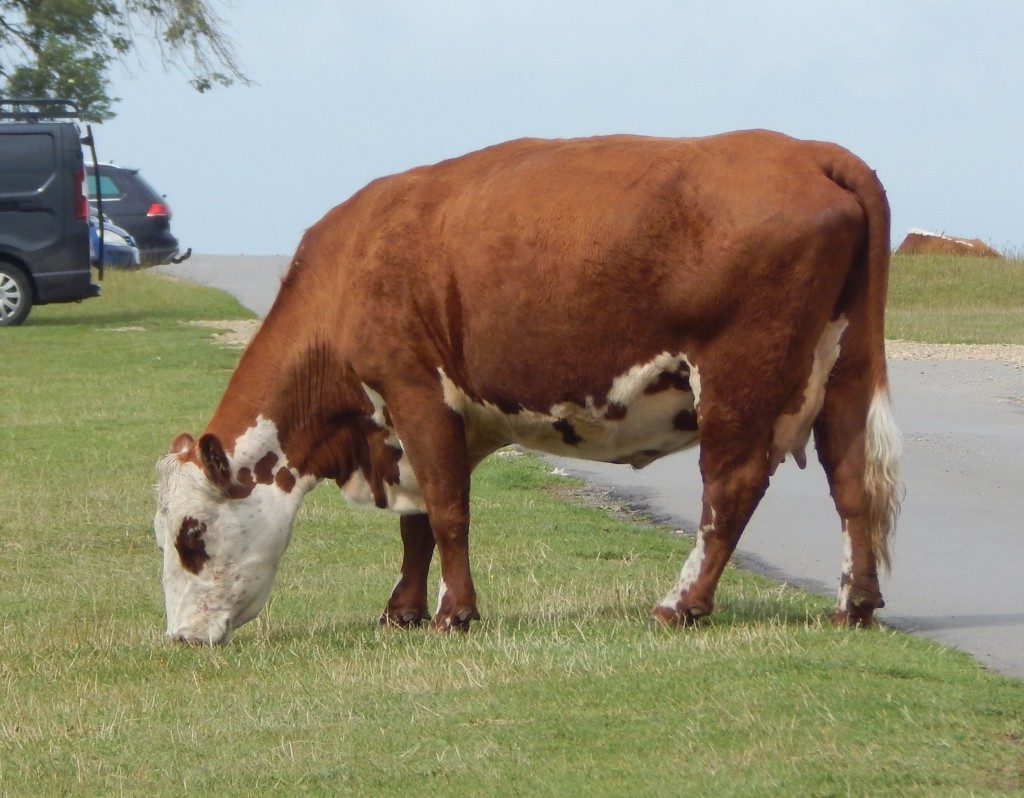
Domestication
The Neolithic Revolution, about 10 000 BC, was a change in human culture from a hunting and gathering to agriculture and settlement. Somewhere around 6 000 BC, modern cattle were domesticated from aurochs, a species that remained in the wild until possibly the Seventeenth Century.
Habitat and use
Cattle are used for meat (beef or veal), milk and leather. They may be entered in competitions at agricultural shows and in some countries, they are used in bullfighting or rodeos.
I won’t go into the details of cattle farming. They may eat by being allowed to graze in fields of grass but modern farming can provide other food sources. Dairy cattle are normally milked twice a day. In modern farms this is a fully automated process
Other Notes
You may wonder why I have included domesticated animals. Well, you are much more likely to see a cow or sheep on your travels than a Sparrowhawk or Strawberry Tree or any kind of sawfly. You will also find them easier to recognize.
Cattle in particular are not only found on farms. Some of my pictures are from Commons or open areas where they are allowed to graze in order to improve the condition of the land or wildlife habitats.
See also
The Buffalo, Bison (known as Buffalo in America) and Yak are among this animal’s closest relatives, coming within the genus Bos. You may see Buffalo in some Nature Reserves but are unlikely to find the others in Britain
